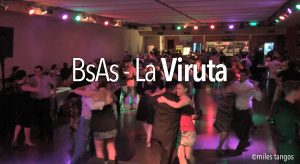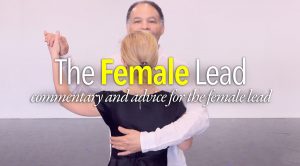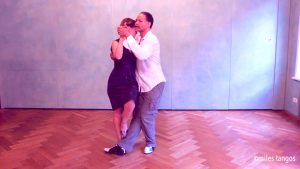While this isn’t necessarily an ‘age’ thing. It is a human thing, we tend to move at the speed at which we think is ok. Put us in front of someone else and their idea of speed, and our idea of speed, or how fast something should be done is shall we say a little wonky. Very infrequently do we do ‘X’ at the same speed as someone else does ‘X’. There’s always, always, always a difference. Now put this in the context of Tango, where there is a definitive lead, and a definitive follow activity, and that’s where things go right off the rails. And that descriptive is without music! Add the music into the equation, which is acting as a time manager, and it’s anyone’s guess what will happen!
Lethargy is moving too slow for the intended lead’s request (‘lead’ is the action, and not the person). What this really boils down to is the reaction time of the dancer that is a.) a lag from the time at which a request was sent to the time it was received. and b.) way in which it is done (the real speed issue). Note what’s missing from this definition, the roles of the dance! There is no blame in this definition. None what so ever. However, that is seemingly about to change. It’s not, but your perception of it will until you get to the end.
What’s about to be said is going to sound like Follower Bashing, it’s not, it’s an observational fact that you don’t want to hear for a variety of reasons, most notably is that Followers get the short end of the stick more often than not. A greater number of Followers suffer from the problem of Lethargy for a variety of reasons. Why ? Frequently Followers are told to be passive, to ‘Wait’ (the use and application of the word creates a weaker Follower on multiple levels). They’re told this over and over and over again. So much so that they ‘wait’ even when they don’t have to. It becomes a default behavior in them. And then you have Leads (the person, not the action), that quite literally reinforce this idea by saying “You have to ‘wait’ for me”. So it’s no wonder that this problem exists. As a result, the Follower is slow to react, and the sensation is as one is ‘moving in quicksand’ or ‘a ton of bricks’. Mind you neither of those are true but that’s the perception.
To be fair, Leads also suffer from this same problem as well. (Didn’t see that one coming, did you ?) They’re either off-beat, or off-execution by a second or two, or off-response response and that creates this wavering lag time that just looks like said Lead doesn’t know what they’re doing. It’s like missing a bus by a full second and then running after it. Only in this case the running after the bus, lasts for an entire song! Talk about embarrassing. Seemingly never to catch up. That’s not true actually. But that’s the perception. Just to clarify, ‘off-response response’ refers to when a Lead (the person, not the action), who is already late in an execution, feels a Follower has executed ‘Y’, the Lead’s own response to the Follower’s response is slow or lethargic!
There is a fix for this problem is to employ the practice in solo practice of: Overshooting to Underdo. Meaning ? You practice walking, extensions, and foot placement drills, at 90 or 100 beats per minute instead of 50. The effect is that you will eventually translate those practice drills to the dance floor as second nature. And at that point, we have another issue ‘Speedy Gonzales’, and then we have to talk about ‘Metering’ but that’s another topic for another day.











